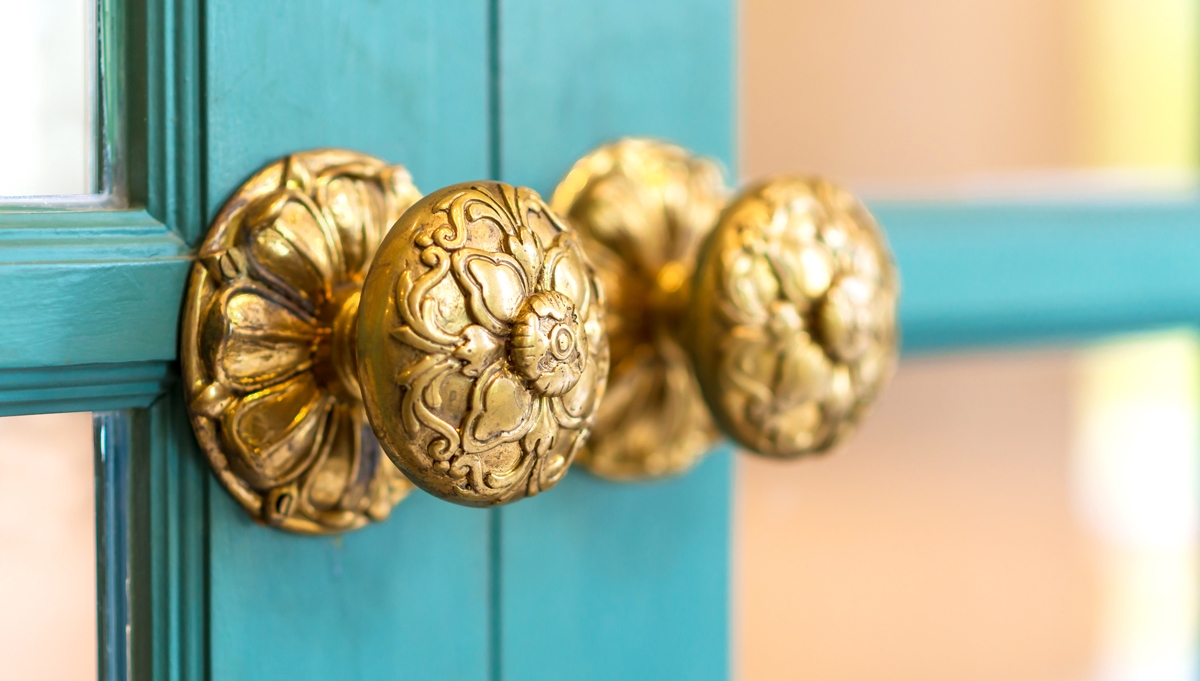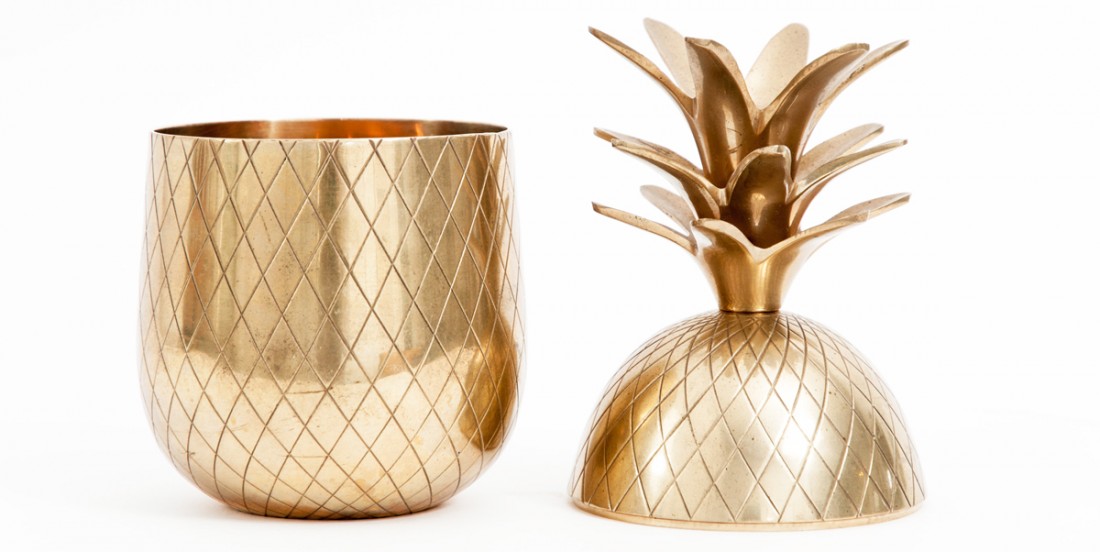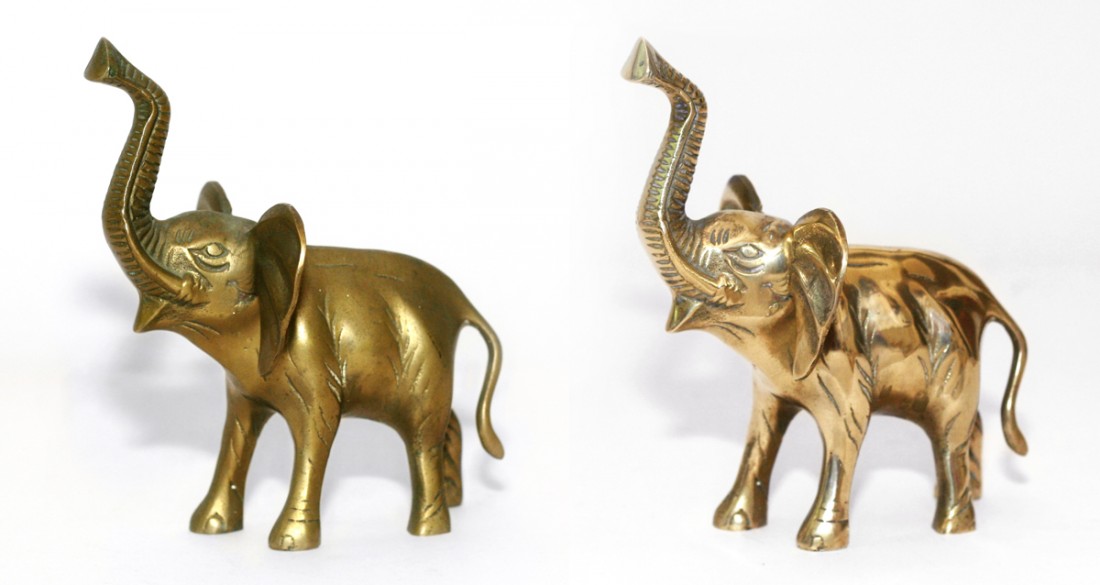All About Brass

We all know that when it comes to home decor, trends seem to appear one day only to be replaced the next, but there’s one comeback that’s turning into a mainstay. Folks, we are in the midst of a brass revival, and there’s no end in sight. We’ve seen it in all of its golden glory in decades past, and it’s back with a surprisingly fresh look.
The best part? You can find amazing brass pieces at affordable prices by shopping estate sales. Hardware, sculptures, tables, candlesticks, garden stools, lighting fixtures, shelving… we regularly see all that and more in a variety of styles and finishes. Not sure where to start? We’ve got you covered.
What is Brass?
Brass is a metal alloy made of copper and zinc. The mixture of the two can create a variety of tones, from warm red to golden yellow. As brass ages, it develops a softer, darkened, matte finish called a patina. This patina adds a certain traditional, antiqued quality that many adore. If you’re more interested in a luxurious, glam look, not to worry. Keep reading for some easy DIY polishing methods.
Identifying Secondhand Brass
When you shop estate sales, you never know what kinds of treasures you’re going to find. You may come across a cool piece of Mid Century Modern wall art with a darkened patina and wonder if you could restore it to its original polished splendor. Before you move forward, there’s an easy way to tell if a piece is truly brass or something basic in disguise. Not all that glitters is gold, and, similarly, not everything brassy is brass.
Now, this is an insider tip. When you hit a sale, bring a good magnet. If something is solid brass, not only will the magnet not stick to it, you won’t even feel a pull. The same goes for bronze, a similar but even more valuable material, as well as precious metals like gold, silver and platinum. A trusty magnet is a great backup, even for the most seasoned estate sale shoppers.
Polishing Brass
Whether you like a traditional, aged appearance or you’re looking for a lavish gleam, the power is in your hands. Most brass estate sale pieces come with a beautiful, soft patina, but for those looking for wow factor, look no further than the following DIY polishing methods:
Lemon Juice and Baking Soda
- Squeeze one full lemon into a ramekin or bowl.
- Add 1 TSP of baking soda. If you don’t have baking soda, fine ground salt can be used as a substitute.
- The mixture will froth and frizz, but don't worry. You shouldn't be facing a full-on science fair volcano situation.
- Stir the ingredients together to create a paste.
- Apply the paste to the brass with a soft cloth. Gently rub the paste in circular motions.
- Rinse the mixture from the brass.
- Buff it to a shine with a dry cloth.
Hot Water and Soap
- Soak the brass in hot, soapy water for a few minutes.
- Rub the brass.
- Rinse it off.
- Buff it with a dry cloth.
Ketchup
Surprisingly, some people have had some luck polishing brass with ketchup! Simply rub the ketchup on the brass, and let it sit for an hour. Rinse away the tomatoey residue, and buff the brass to a shine. It doesn’t get much easier than that!
Brass Polish
If all-natural, DIY methods aren’t your thing, you can also purchase specialty brass polish. Just make sure to purchase a trusted, high-quality polish, and follow the directions as marked on the bottle.
Sourcing Brass
Ready to join the brass lovers fan club? Luckily, sourcing some for yourself won’t cost you a fortune. Whether you’re looking for bold statement pieces or want to add some character with perfectly-aged 19th-century accents, estate sales are the place to be. Visit a sale near you, find the perfect piece and polish it to your heart’s content.


